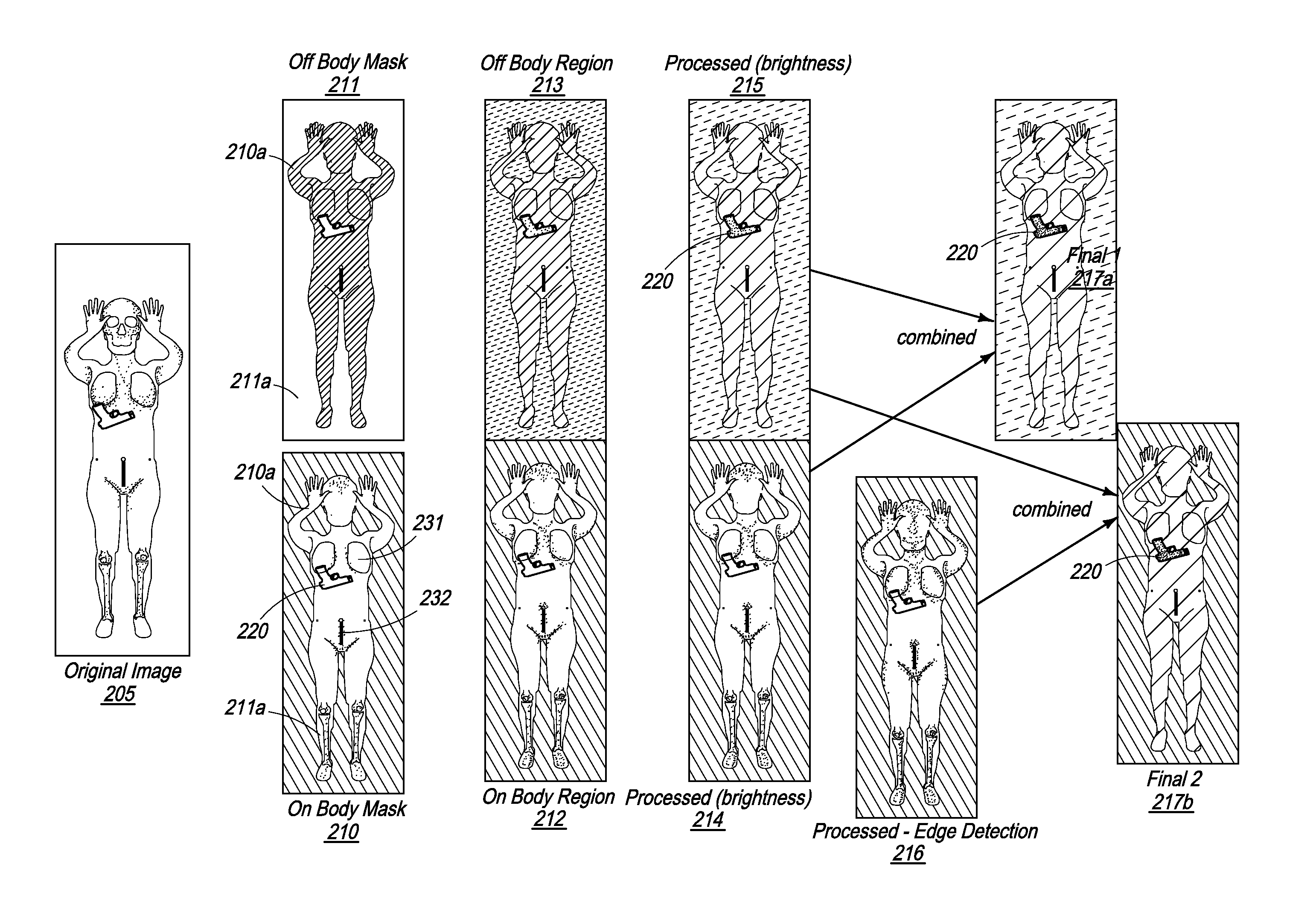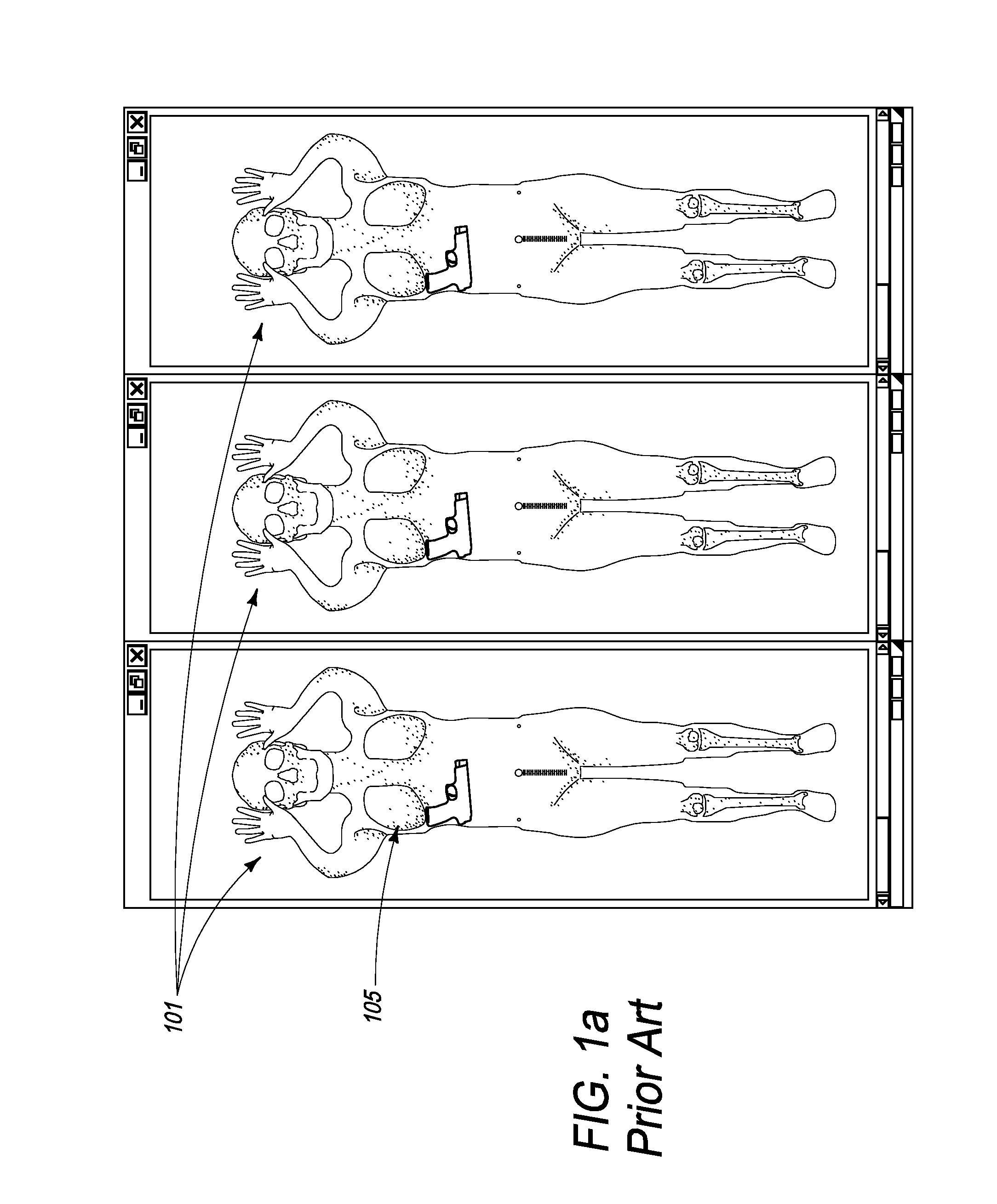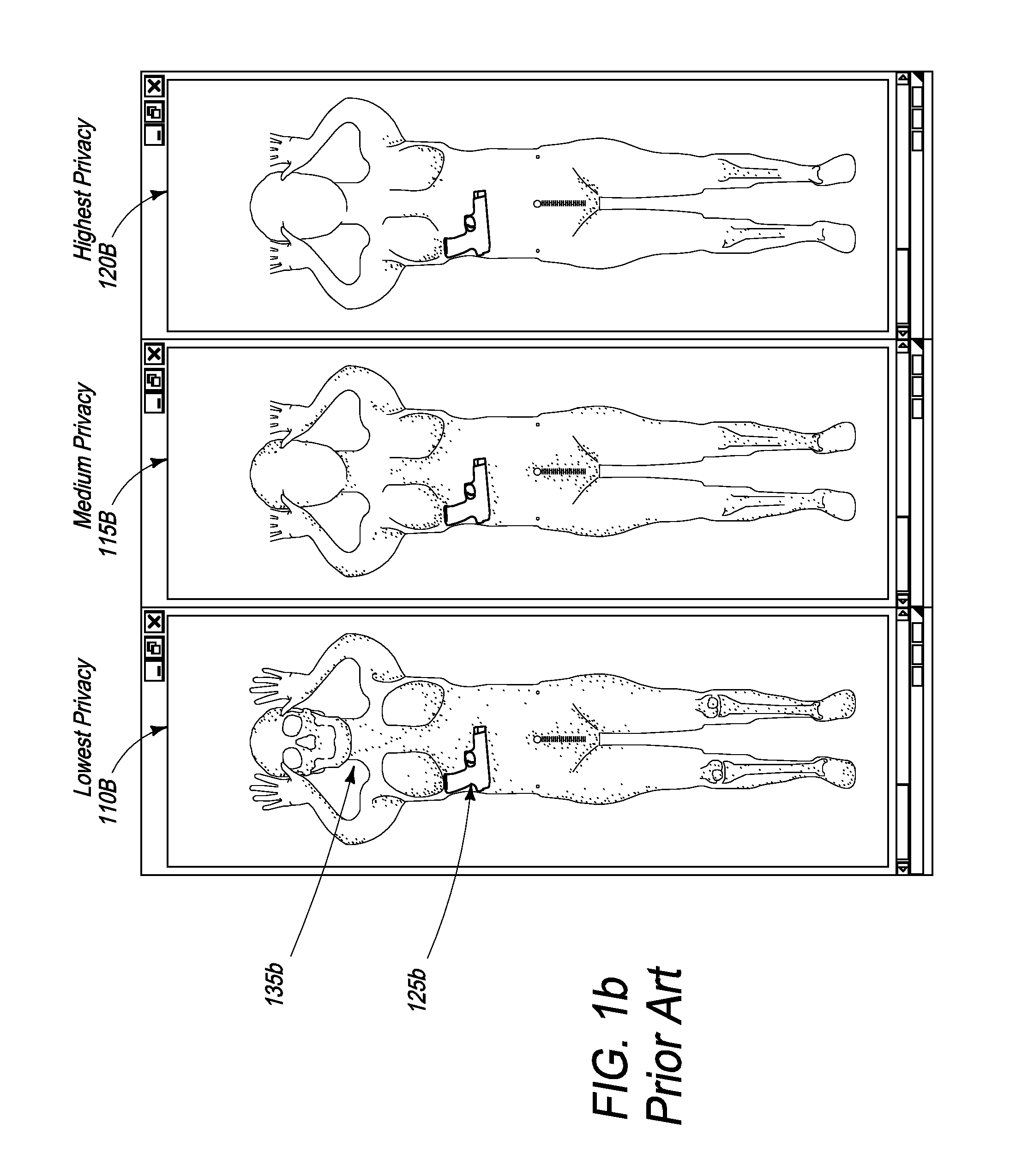Personnel security screening system with enhanced privacy
a security screening and enhanced privacy technology, applied in the field of image processing, can solve the problems of preventing the generation of high image quality, achieving low radiation dose, and poor detection capability for a wide range, and achieve the effect of high contras
- Summary
- Abstract
- Description
- Claims
- Application Information
AI Technical Summary
Benefits of technology
Problems solved by technology
Method used
Image
Examples
Embodiment Construction
[0035]The present invention is directed towards image processing techniques that advantageously process a generated image by dividing the generated image into at least two regions, separately processing the at least two regions of the image, and viewing the resultant processed region images either alone or as a combined image. The present invention is also directed towards image processing techniques that allow for different regions of an original image to be processed separately so that different portions of the image can be optimized to desired object detection or privacy levels.
[0036]The present invention is directed toward multiple embodiments. Language used in this specification should not be interpreted as a general disavowal of any one specific embodiment or used to limit the claims beyond the meaning of the terms used therein.
[0037]Referring now to FIG. 2a, in one embodiment and not limited to such embodiment, an original image 205 obtained from scanning a human subject may ...
PUM
| Property | Measurement | Unit |
|---|---|---|
| atomic number | aaaaa | aaaaa |
| atomic number | aaaaa | aaaaa |
| X-ray reflectance | aaaaa | aaaaa |
Abstract
Description
Claims
Application Information
 Login to View More
Login to View More - R&D
- Intellectual Property
- Life Sciences
- Materials
- Tech Scout
- Unparalleled Data Quality
- Higher Quality Content
- 60% Fewer Hallucinations
Browse by: Latest US Patents, China's latest patents, Technical Efficacy Thesaurus, Application Domain, Technology Topic, Popular Technical Reports.
© 2025 PatSnap. All rights reserved.Legal|Privacy policy|Modern Slavery Act Transparency Statement|Sitemap|About US| Contact US: help@patsnap.com



